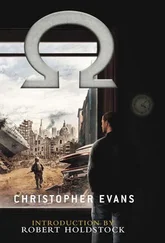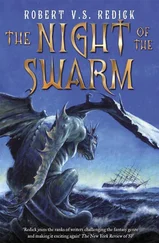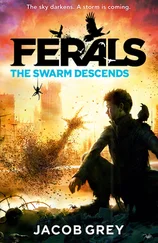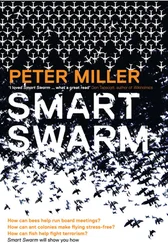“We can’t lose these drones like that.” His voice was ice-cold. “If we do, I’m holding you responsible.”
I held up my hands in a not-my-fault way. “Nothing we can do but keep an eye on where they crash and hope your guys get to them first. Unless you can open some secondary communications link. They might still respond to that.”
Dmitri looked at the map. The dots of the swarm already described an arc with a two-mile radius. He chewed his lip uncertainly. For the first time since I had met him the situation was not completely in his control, and he suddenly seemed less like an alpha hyena, more like a nervous herd beast afraid to make a decision.
“We do have a secondary communications link,” he said slowly.
I peered at him for a moment, then nodded as if I too had just seen the solution. “The onboard cell phones.” Those drones soaring further away from us with every passing second were, quite literally, cell phones with wings; each had their own telephone number.
He took his wallet out of his back pocket, and produced an ordinary cell-phone SIM card. It went into a cellular modem connected to the control hut’s computer.
“How does it work?” I asked, as Dmitri typed a password, so rattled that he didn’t even hide it. I watched his fingers on the keyboard, memorized the characters. A victory – but a small one; it would be effective only in conjunction with that particular SIM card.
“Command-line. Very basic. Converts your SNP protocol into text messages.”
“Can you broadcast one-to-many?”
“Yes. You prefix the command with a list or regex of the drone IDs you want to contact. That goes to our gateway, and it sends the text messages.”
A window opened on the computer’s screen, empty but for a single › prompt. Dmitri typed: [87-92], then passed the keyboard to me.
“Bring them back,” he said harshly. “And don’t screw up.”
I stared at the blinking cursor and did nothing. The numbers he had just typed indicated that Ortega had at least 92 drones; but that wasn’t news. What had me frozen was that this was an opportunity to throw the kill switch, probably the best one I would ever get.
If I understood Dmitri correctly, this command line was an open interface to all of Ortega’s drones that were powered on and in cell phone coverage. From what I had seen, his drones were usually kept in standby mode, and cell coverage was increasingly ubiquitous around the globe. All I had to do was replace that [87-92] with the wild card [*], type the thirty-character kill-switch sequence, hit ENTER – and every single one of Ortega’s drones anywhere in the world would die. I could type very quickly. And maybe I could distract Dmitri somehow.
“Are you sure they’re in cell coverage?” I asked.
“We’re only seventy kilometres from Mexico City. They’ll fly into coverage soon enough if they’re not there already. Bring them back.”
I took a deep breath. Flicking the kill switch would save probably thousands of innocent lives, against which I could weigh only my own. It would be a far, far better thing to do than ever I had done.
But there might still be another way.
“Do it!” Dmitri demanded.
I closed my eyes, typed, and hit RETURN.
When I opened them again, the text of the come-home command I had issued glowed accusingly. I looked at the map. The dots on the screen were already heading back towards the mansion. They and I were safe.
“Good work,” Dmitri said, satisfied. “Well done.”
“Sure,” I muttered. “Thanks.”
That night Dmitri barged into my room, where I was playing old video games on my laptop for want of any other way to spend my time, and said accusingly, “We were unable to replicate that flaw in simulation.”
I shrugged. “Simulation means nothing. There’s some real-world trigger.”
“Like what?”
“I don’t know. You want to run that test again and see if it happens again?”
I didn’t mind if he called my bluff; I could blame wind patterns, flocks of birds, the angle of the sun, variations in the earth’s magnetic fields. The black-box nature of neural nets meant any such cause was theoretically possible, if extremely unlikely.
Dmitri frowned. “No. They are refining the training. We’ll test again tomorrow.”
And we did, at dawn. This time all the tests passed with flying colours, but Dmitri insisted on repeating them all again, and again, and again, with slight variations. We tested until after dark. When the men on the ground talked to Dmitri via walkie-talkie, I could hear the exhaustion and frustration in their Spanish. The vibe reminded me of a software company in the days before demonstrating their flagship product at a major convention. I wondered if maybe Mr. Ortega himself was going to come witness his drones in action.
I was tired too when they locked me back into my room, but I didn’t let myself sleep. Instead I went back to trying to pick my door lock with wires stolen from the server room. It had been many years since Jesse and I had experimented with locksmithing, and he had always been much better at it; but this was a lock to a Mexican dorm room, not a bank vault. It should have been easy. Yet when I finally gave up and went to bed it felt like I had made no progress at all.
Progress on other fronts was equally minimal. I still had no idea where I might find an Internet-enabled machine. Even if I did, it was password protected. The only good news was that I had learned exactly where I was.
When I had sabotaged the drone test, they had spiralled outwards in survey mode, automatically recording the input from their belly cameras. Later, when we backed up their flash memory for later analysis, I had managed to surreptitiously download a sampling of images onto my laptop. Those aerial photos showed me all the terrain for miles around.
The abandoned academy stood in the middle of a huge, fenced-off area surrounded on three sides by mountainous wasteland. The fourth was a steep-sided ravine not unlike the Arroyo Seco, my running route when I had lived in Pasadena, in my past life; and past that canyon was a vast concrete-and-tin shantytown. It went on for miles, to the very edge of the images the drones had captured, a conurbation of tiny, tightly packed buildings and winding dirt roads that collectively looked like some kind of living thing, a coral reef or a fungus.
No bridges crossed that ravine, and I wouldn’t have wanted to escape that way anyways. No gringo could hide in a shantytown like that. But I suspected it marked the very edge of metropolitan Mexico City, the world’s second largest city. Beyond stood civilization, and, hopefully, liberty and salvation.
But first I had to escape this razor-wired compound patrolled by armed guards and dogs. An almost insurmountable task – but not quite an impossible one, because I still had one trump card.
The override sequence.
Sophie had sent that secret key to my Hushmail account, which was backed up on the laptop Dmitri had recovered. Now that I had learned the password to the cellular network that linked Ortega’s drones, I might actually be able to seize control of them.
It was the nuclear option. If I succeeded, my options would immediately shrink to either escape or death, and even with six armed drones at my command, escape did not seem particularly likely. But it seemed possible. At the very least it seemed worth plotting. I wanted that hidden trump card in my hand even if I never dared to play it.
Dmitri was gone the whole next day, during which the guards were particularly watchful, and especially forbidding. I was not allowed onto the roof, or into the server room. I couldn’t even walk around outside without two men following me. My certainty that a visit from on high was imminent increased.
Читать дальше












